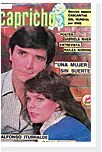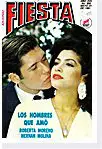¿ Why Fotonovelas ?
Fotonovelas are an Ideal Outreach And Health Literacy Teaching Tool:
Traditionally a pop-culture medium in Mexico, fotonovelas have proven to be effective health education tools. Here are some of the benefits of fotonovelas:
- Visually fun and easy-to-read
- Engaging visual storytelling
- Culturally familiar to Latin American audiences
- Excellent for improving health literacy
- Effective use of Plain Language techniques in Spanish and English
- Ideal for modeling healthy behaviors
- Culturally tailored to meet your clients’ needs
- Great to share across generations in a family
- Proven as an effective outreach and social marketing tool in Latino communities
Call us today for a free consultation on how fotonovelas can help you reach your audience and improve their health!
Our Story
Ana Consuelo Matiella, the President of The Fotonovela Production Company, LLC produced her first fotonovela
in 1983 for the National Arthritis Foundation. Dolores y Esperanza was the first fotonovela ever produced on arthritis. This fotonovela launched Matiella’s career as a developer and producer of educational fotonovelas. Since then, Matiella has produced over 60 bilingual fotonovelas, webnovelas and radionovelas.

The Fascinating History of Fotonovelas
Fotonovela scholars date the origin of fotonovelas back to post World War II when the photo-booklets were first produced in Italy as a by-product of the film industry. They began as a pictorial summary of Hollywood films and then evolved into their own unique medium. From the early 1950s to the 1980s, Mexico was at the center of the fotonovela and historieta boom.
The Rise of Fotonovelas and Historietas
Some of the earlier fotonovelas in the 1950s and 1960s were written by the famous Spanish romance novelist, Corín Tellado. Irene Herner, the Mexican sociologist and author of the seminal work on fotonovelas Mitos y Monitos, reported that in 1979, Mexico was publishing 70 million copies of fotonovelas and historietas per month.
Started With The Potential To Educate The Masses

Dr. Herner, in her introduction of Mitos y Monitos, marvels at the potential of using fotonovelas and historietas to educate the masses. “Why is it that Mexico has allowed this medium to fall by the wayside instead of implementing it with its potential for mass and systematic utilization to accomplish some of its most important educational and social goals?”

Fortunately, the use of educational fotonovelas began in the 70s. Organizations such as Aid for International Development produced fotonovelas to address the issue of family planning in Latin America and Africa.
Indeed, one would have to agree with Dr. Herner that in a country that suffered from staggering illiteracy rates, there could be so many millions of every day, reading these little booklets on buses, street corners, during their lunch hours and coffee breaks, and at home in their leisure time.
Herner, Irene. Mitos y Monitos: Historietas y Fotonovelas en Mexico. Mexico, D.F.: Universidad Nacional Autónoma de México, 1979
Get Your Own Educational Fotonovela Today
If you are interested in our family-owned company’s educational fotonovelas, get in touch with us today. Our helpful staff will gladly help you out.
